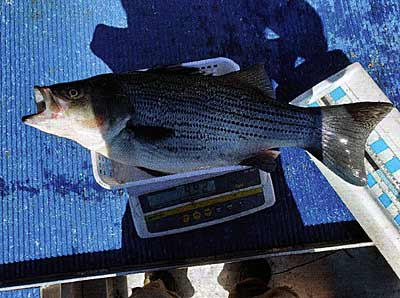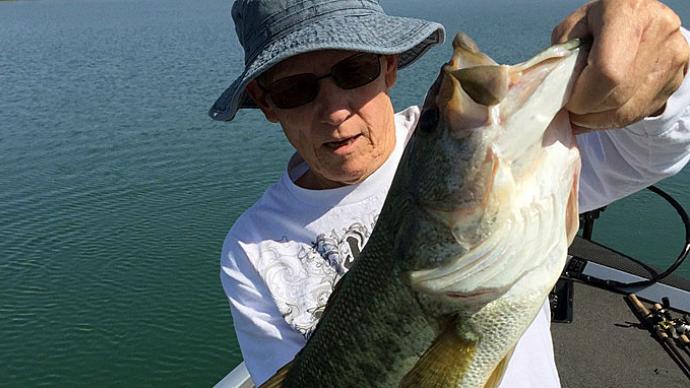
Trophy fisheries hold a special place in the hearts of those blessed enough to own one. Some of these fisheries carry this trophy status for years, while others struggle to keep the momentum going after the first generation of large fish ages out. Oftentimes, it takes an unprecedented amount of effort to achieve success—and then, one thing can go wrong and cause a total loss in synergy, resulting in a complete break down and loss of trophy status.
Whether the fishery is large or small, not all waterbodies have what it takes to become trophy fishery, much less a sustainable one. When pushing a fishery's limits, one key is maintaining good water quality year-round. When maintained successfully, the fishery has a chance at success; without sufficient stable water quality, the fishery will always be held back or be at risk of total failure. New technologies can be employed to improve water quality, but there is nothing better than having the right amount of clean water flowing into the system.
The size of a pond is not a limiting factor when it comes to building a trophy fishery, but people often overlook the potential a small pond has to become an abundant fishery.
One great example of a small pond pushing the limits is a 0.9-acre pond in Virginia (see the January/February 2020 issue of Pond Boss magazine). The goal for this fishery is to have high catch rates of double-digit bass as well as sunfish greater than two pounds.
In 2016 the fishery was electrofished and determined the pond should be reset using rotenone. Following rotenone application, fathead minnows, golden shiners, bluegill and redear sunfish were stocked. With such a lofty goal of high catch rates of big fish, a management strategy tailored to push the limits of what is naturally possible was implemented.
A predator density of 100 fish was chosen for the pond, which is two or four times higher than what we would normally choose for a more natural fishery. 50 hybrid striped bass were stocked in the spring of 2017, averaging 0.4 pounds at 12 months of age. Additionally, 50 female northern strain Largemouth bass averaging 1.2 pounds at 24 months of age were stocked.
If looking for predator fish to reach their full genetic potential, it would have been better to stock predator fish that were only a few months old, rather than one or two years. By stocking young fingerlings into a productive fishery with ample forage fish, those fingerlings would be able to grow faster while likely benefitting from better nutrition than a hatchery setting would normally provide. But, one of the obstacles here is having to buy what's available from commercial hatcheries. With the larger northern bass, we could select females that may have been larger in a natural environment at that age, but we knew we could provide more nutrition year-round than any natural pond.
Although young fingerling fish have greater potential in the long run, this trophy fishery was built using fish with better environmental potential. What these fish lacked in the long run, they made up with short-term fishing opportunities and rapid growth. Since we were able to stock all female Largemouth bass, they also allowed for greater control over predator recruitment.
Growing as many of these 100-predator fish to sizes greater than 10 pounds presents many challenges. Of all the challenges this fishery faces, genetics and the dense population of predator fish are the two largest obstacles. The genetics challenge was addressed by utilizing hybrid striped bass, since they would thrive in the pond's cool, clean water. Hybrid stripers have the ability to reach sizes greater than 15 pounds in a small pond of this nature, which made them a great choice when matching the waterbody's characteristics to the goals of the fishery. The northern Largemouth bass that were stocked have a low probability of ever hitting 10 pounds, but a decent number of them should comfortably reach eight pounds.
The dense predator population is the most challenging limiting factor standing between this client and their goals. Thankfully, the spring that feeds this pond provides a continual source of fresh water to the system, making it easier to sustain the higher-than-normal biomass of fish required to succeed. The spring water is naturally low in phosphorus and is moderately hard, which is nearly perfect for this fishery. The fresh flow keeps the pond relatively clear, allowing it to maintain its low phosphorus level throughout the year, even when the fishery is being managed aggressively. Likewise, the natural flushing helps reduce the biological oxygen demand (BOD), making it easier to maintain sufficient oxygen levels throughout the warmer months.
Most trophy fisheries are managed from the bottom up, with a strong focus on plankton as the base of the food chain. With the lofty goal of high numbers of predator fish, this small fishery would never be able to naturally produce the amount of forage needed. Instead, the system is managed for relatively clear water to help ensure healthy, stable oxygen levels year-round, and then forage fish are stocked as needed to bring the forage base up to a sufficient population.
The most notable thing we have learned from this project is that the 10:1 ratio that the industry leans on when forecasting predator growth only held true for the first six months that the fish were in the pond. During those six months the conversion rate was somewhere between 8:1 and 11:1 depending on a variety of variables, including things such as the predator mortality rate as well as the biomass of forage remaining in the pond at the end of six months.
Over the past couple of years, it has required far greater than 10 pounds of forage to grow predators one pound. Our data indicates current predator fish are converting forage at a ratio as high as 2-3 times that of what the industry standard indicates. Although our data is currently inconclusive when applied to all fisheries, it is conclusive for this individual project when it comes to determining the amount of forage that needs to be stocked to achieve the desired outcome.
It remains interesting to watch the fishery respond to the forage stocking strategies. Even though the predator fish had been growing well, our internal projections for fish growth were continually being missed during the first couple of years. It turns out we were inadvertently holding the fishery back until we realized we needed to stock a biomass of forage far greater than the 10:1 ratio to achieve the desired growth.
The conversion rates observed are of the combined growth from the Largemouth bass and hybrid striped bass. It is likely these fish species convert forage at different rates, which makes the findings less applicable to other projects that only have one of these species present. That said, the new findings have been incredibly helpful when setting client expectations, as well as adjusting the management strategy to better achieve the goals. Prior to having this data, we were unintentionally misleading both ourselves and the client, while also falling short of our internal predator growth goals. The missed growth that occurred as we were learning is lost forever—and this prevented the pond's initial generation of predator fish from growing as large as they would have had we understood this key detail sooner.
More research is needed to better understand predator conversion rates in trophy fisheries, especially as predators reach advanced sizes. As we become more knowledgeable on the actual amount of forage required, management strategies can be adjusted to maximize predator growth, and both goals and expectations can become better aligned with a realistic outcome.
This small Virginia trophy fishery has an incredibly bright future ahead with a high probability of producing some exceptional fish. Even though providing the bass with enough forage to maximize growth is a challenge, it is important to understand that having a high-quality water source is what sets the foundation and provides the opportunity for all other management strategies to succeed or fail. In this case, correct fundamentals have positioned the fishery to be a couple ounces away from several 10-pound bass just three years after stocking them at 0.4 pounds.
David Beasley is a Fisheries Biologist and the Director of Fisheries at SOLitude Lake Management, an environmental firm providing sustainable lake, pond, wetland, and fisheries management services. Learn more about this topic at www.solitudelakemanagement.com/ knowledge
Reprinted with permission from Pond Boss Magazine



